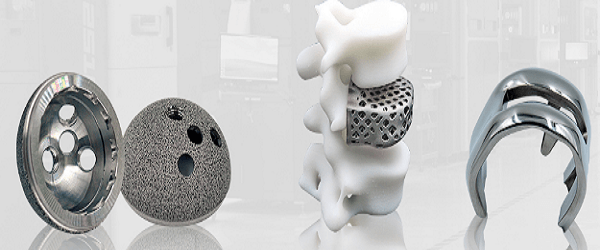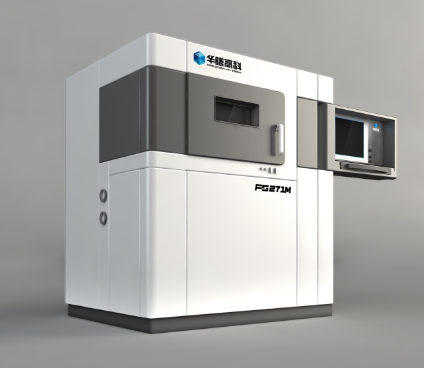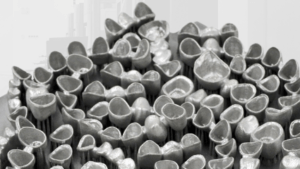 China-based Hunan Farsoon Hi-tech Co., Ltd., also known as Farsoon Technologies, was established in 2009 by laser sintering expert Dr. Xu Xiaoshu. Not only did the company make a deal with the Chinese government to build and manage China’s first national 3D printing lab, it also recently expanded its direct sales of metal additive manufacturing in North America with the creation of Farsoon Americas. Farsoon Technologies has great faith in additive manufacturing and has formed important partnerships over the last couple of years, including one with Prodways to develop a 3D printer product range for plastics and metals and a collaboration with Laser Sintering Service (LSS). Farsoon has recently introduced its metal laser sintering solution, the FS271M.
China-based Hunan Farsoon Hi-tech Co., Ltd., also known as Farsoon Technologies, was established in 2009 by laser sintering expert Dr. Xu Xiaoshu. Not only did the company make a deal with the Chinese government to build and manage China’s first national 3D printing lab, it also recently expanded its direct sales of metal additive manufacturing in North America with the creation of Farsoon Americas. Farsoon Technologies has great faith in additive manufacturing and has formed important partnerships over the last couple of years, including one with Prodways to develop a 3D printer product range for plastics and metals and a collaboration with Laser Sintering Service (LSS). Farsoon has recently introduced its metal laser sintering solution, the FS271M.
As with all its machines, Farsoon is dedicated to high quality, with the benefit of lower cost for its users, and utilizes imported parts for all of the printer’s main components. The FS271M offers users both performance and price advantage, and incorporates cutting-edge safety systems, combined with over-sized protective filter systems and an inert gas supply. The FS271M is setting new standards in metal laser sintering, and is the perfect choice for applications in the aerospace, automotive, and medical fields, thanks to its 275 x 275 x 320 mm build size. It also features a 500W Yb-fiber laser, and highly accurate custom scanning algorithms.
It’s no desktop machine – the FS271M is a hefty 2,033 kg, with dimensions of 1750 x 1420 x 1860 mm. This 3D printer features a Windows XP operating system, with Windows 7 expected soon. The company was founded with the vision of an open platform system, so its users could enjoy total freedom of operation with any other open platform application or development program. Keeping in line with Farsoon’s other systems, the FS271M gives users total access to the machine’s parameters and settings, so they have the choice of using Farsoon materials or a range of third party materials.
 Farsoon’s line of 3D printers is designed for use in applications including architecture, automotive, aerospace, industrial design, medical, and even art and design. Research and development costs for almost all of these industries is huge in the early stages of production. Most companies who want to bring this kind of innovative technology to the market have to roll these R&D costs into consumer prices, but Farsoon is on track to be the first company to, essentially, “break from the pack” on this. Farsoon achieved this by using the expertise of founder Dr. Xu Xiaoshu and establishing a strong R&D team, so the company is able to continue improving upon its existing technology, without first generation startup costs getting in the way of a lower price tag for its customers. It doesn’t hurt that the company has a well-established supply chain and access to top-quality manufacturing in China, either.
Farsoon’s line of 3D printers is designed for use in applications including architecture, automotive, aerospace, industrial design, medical, and even art and design. Research and development costs for almost all of these industries is huge in the early stages of production. Most companies who want to bring this kind of innovative technology to the market have to roll these R&D costs into consumer prices, but Farsoon is on track to be the first company to, essentially, “break from the pack” on this. Farsoon achieved this by using the expertise of founder Dr. Xu Xiaoshu and establishing a strong R&D team, so the company is able to continue improving upon its existing technology, without first generation startup costs getting in the way of a lower price tag for its customers. It doesn’t hurt that the company has a well-established supply chain and access to top-quality manufacturing in China, either.
Thanks to these advantages, Farsoon continues to be a pillar of strength in the Chinese technology industry, and can present a new generation of 3D printers at a much lower price than those of its competitors, without sacrificing dependability or quality. The company believes that the industry can only grow through open systems and discovering better, more cost-effective materials, which is why Farsoon continues to actively collaborate with top material makers to work on the next generation of laser sintering materials. Discuss in the Farsoon Technologies forum at 3DPB.com.
Subscribe to Our Email Newsletter
Stay up-to-date on all the latest news from the 3D printing industry and receive information and offers from third party vendors.
Print Services
Upload your 3D Models and get them printed quickly and efficiently.
You May Also Like
Nikon SLM Solutions Sells SLM 500 to Primary Weapon Systems to Expand Suppressor Production
Primary Weapons Systems (PWS) is a Boise, Idaho-based manufacturer of suppressors, firearms, and related components. A subsidiary of Vigilant Gear and a sister company to aftermarket Glock slide manufacturer Lone...
3DPOD 261: Tooling and Cooling for AM with Jason Murphy, NXC MFG
Jason Murphy´s NXC MFG (Next Chapter Manufacturing) is not a generalist service; instead, the company specializes in making tooling. Using LPBF and binder jet, the company produces some of the...
HP and Firestorm Labs Form Partnership to Use Multi Jet Fusion 3D Printers in Deployable Factories
HP Inc., maker of a range of additive manufacturing (AM) solutions including the Multi Jet Fusion (MJF) ecosystem, has announced a partnership with Firestorm Labs, a developer of containerized, deployable...
3D Printing News Briefs, July 2, 2025: Copper Alloys, Defense Manufacturing, & More
We’re starting off with metals in today’s 3D Printing News Briefs, as Farsoon has unveiled a large-scale AM solution for copper alloys, and Meltio used its wire-laser metal solution to...



































